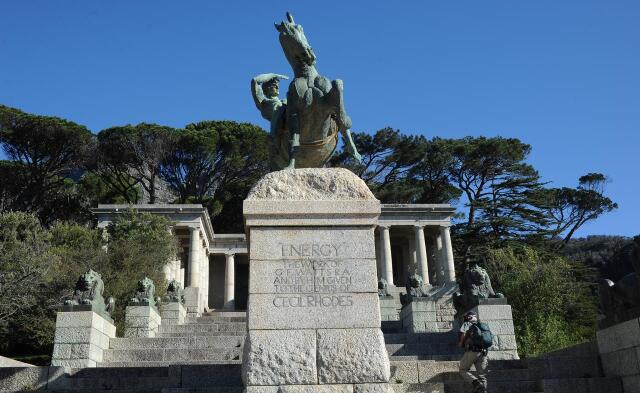In Kimberley the statue of Cecil John Rhodes on horseback had to be restored to its original structure after it was defaced
JOHANNESBURG – The infamous Paul Kruger statue on Pretoria’s Church Square and other apartheid and colonial statues, including streets named after apartheid rulers, will be relocated if the public in local municipalities and metro councils vote for their removal.
This was the view of Arts and Culture Minister Nathi Mthethwa who participated in the Gauteng provincial legislature’s virtual special sitting on the transformation of South Africa’s heritage landscape.
Mthethwa’s address comes after public protests in various parts of the country in which different political parties, students and academics demanded the removal of all colonial and apartheid figures.
At some institutions, such as the UCT, angry Fees Must Fall protesters defaced the statute of mining magnate Cecil John Rhodes.
In Tshwane, the local metro council had to erect a special fence to preserve the statue of Kruger to prevent desecration.
Similarly, in Kimberley, the statue of Cecil John Rhodes on horseback had to be restored to its original structure after it was defaced.
Mthethwa told the legislature that local authorities had the powers to hold public hearings about the future of these statues found in most of the towns and cities in the country.
He said municipalities ought to hold joint meetings with the Heritage Council in the different areas about the possible relocation of the statues.
Mthethwa, however, warned against making reckless decisions about their removal.
“We should guard against what happened in the Soviet Union during 1989 and 1990 where these statues were destroyed and toppled. All of a sudden, there was an emergence of people who visited the former Soviet Union and wanted to be shown those statues at the museums.
“The increased number of visitors put pressure on the government to facelift those statues and put them back on public places for people to view them,” said Mthethwa.
He added that cultural parks would be erected to allow some people to view the apartheid statues but Gauteng MEC for Sport, Arts, Culture and Recreation Mbali Hlophe had none of it.
“The presence of these colonial statues and monuments in the public domain do not resonate with the founding principles of the democratic constitution of the land.
“They invoke sentiments of racism and white supremacy in the public domain,” Hlophe said.
She was adamant that the world over was taking a particular stance of dismantling colonial statues like in Europe.
“We are of the view that these should either be placed in less prominent spaces, or taken to museums or left where they are but be visibly and boldly branded as ‘Statues of Disgrace’ with a plaque written of the transgressions the individual has committed, so as society and generations after us walk by them, they may view them for the disgrace with which these individuals are, so history should never repeat itself,” Hlophe insisted.
This was a similar sentiment expressed by the EFF member Azwi Tshitangano – but he made an emphatic call that all those statues including monuments of apartheid should all be “lacerated”.
Other opposition parties such as the IFP, Freedom Front Plus and DA disagreed with the move saying it would pose a threat to reconciliation brought by former president Nelson Mandela in 1994.








